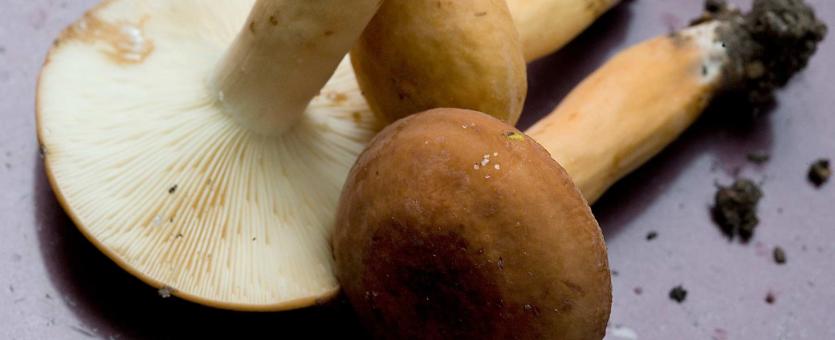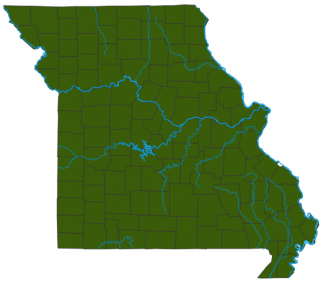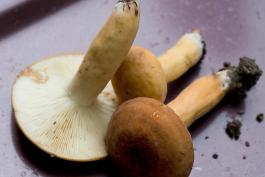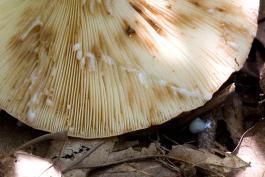
Velvety, orangish brown cap and stalk; white flesh and white gills that exude a milky white latex; fishlike odor. Grows scattered in deciduous woods. June–September. Cap convex, with incurved margin at first, becoming flat to vase-shaped; orangish brown; flesh white, staining brown when cut; texture velvety, dry. Latex white, abundant, staining brownish, with a fishlike odor. Gills broad; spacing crowded; pale cream-colored, bruising brown; gills attached. Stalk with equal sides, sometimes tapering at the base; orangish brown, often the same color as the cap; texture dry. Spore print white. Spores magnified are round, ornamented. This mushroom has a definite fishlike odor after handling or with age. The cap looks like orangish brown velvet.
Lookalikes: The hygrophorus milky (Lactarius hygrophoroides) has distant gills, lacks an odor, and does not discolor when damaged.
Cap width: 2–5 inches; stalk length: 2–4 inches; stalk width: ⅜ to ¾ inch.

Statewide.
Habitat and Conservation
Grows scattered in deciduous woods.
Status
Considered a choice edible. The taste is excellent. Even though the smell of this mushroom is fishy, the odor dissipates with cooking. The latex will stain your skin (and other surfaces) brown, so consider wearing gloves when handling them.
Life Cycle
This species is mycorrhizal: It exists most of the time as a network of cells (mycelium) connected to tree roots, in a symbiotic relationship with the tree. (Many trees fare poorly without their fungal partners.) When ready to reproduce, the mycelium sends up the mushroom aboveground—this is the reproductive structure. Spores are produced in these structures and are released to begin new mycelia elsewhere. The mycelium of a mushroom can live for decades.
Human Connections
Foresters, horticulturists, and home gardeners have found that the presence of mycorrhizae in soil is important for healthy plants, and it is common to inoculate sterile or degraded soils with mycorrhizal cultures to improve plant growth.
Ecosystem Connections
This is one of many fungus species that help nourish forest trees through symbiosis. The netlike fibers of the fungus cover the surface of the tree's roots, increasing the surface area and the roots' ability to absorb water and nutrients. In return, the tree shares nutrients with the fungus.






Mushrooms are a lot like plants, but they lack chlorophyll and have to take nutrients from other materials. Mushrooms are neither plants nor animals. They are in a different kingdom — the fungi. Fungi include the familiar mushroom-forming species, plus the yeasts, molds, smuts, and rusts.
Always be cautious when eating edible mushrooms. Be absolutely sure of the ID, and only eat a small amount the first time you try it to avoid a reaction..





















